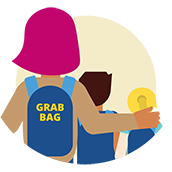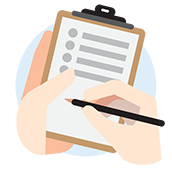Local and historical impacts of emergency eventsNgā pānga paetata, hītori rānei o ngā ohotata
Find ideas and resources for teaching local and historical impacts of emergency events.
On this page
Setting the scene and identifying prior knowledge
Guide students in exploring natural disasters in New Zealand and the emergency events that are most likely to happen in their area.
-
Discuss pictures of emergency events that have happened in your area or other parts of New Zealand.
The National Emergency Management Agency has a photo library of New Zealand emergency events.
Ask questions like:
- What has happened here? How do you know?
- Why do you think this happened?
- What could they have done to prepare for this emergency?
- What do you think they might do next?
- Where could they go?
- Have you ever experienced something like this?
- How could they be prepared if this emergency happened again?
- If the emergency event happened in a place outside your area, how might it impact you as well?
After these discussions break the class into groups and do a role play of emergencies. Children can perform how to react in an emergency or how to prepare for another one.
You could explore the Natural Hazards Commission Toka Tū Ake's Fix. Fasten. Don't Forget. for more information on these questions.
-
Students can present their thinking on Thinking Maps. You can use these maps as starting points to extend students’ thinking. Ask them the following questions.
- How did you know what you knew?
- Why is this important?
- What is influencing your thinking?
Explore personal accounts, focusing on thoughts and feelings. Create a flowchart or timeline of events to show the ways people may respond to an emergency.
-
Read Flood or Isabel’s Upside-down Day. Use prompts, questioning or other strategies to focus on the feelings and emotions of characters in the story.
- “Flood” by Sonny Mulheron. School Journal, Part 2, Number 2, 2004
- "Isabel’s Upside-down Day" by Rosamond Rowe, 2000

Visit the Natural Hazards Commission Toka Tū Ake website for more information on making your home safer.
Emergency events and local iwi
From the earliest times in New Zealand history, earthquakes and eruptions were recorded. Both as eye witness accounts and as pūrākau. Māori are kaitiakitanga of the land of Aotearoa and, as such, protect and guard the land no matter what form it takes. As tangata whenua, Māori have been involved in all of the emergency events in Aotearoa.
Find pūrākau about historic emergencies on the Te Ara website.
Explore this history and relationship with your students.
- Invite iwi historians to share local accounts of emergency events in your area.
- Work with your students and their whānau to develop an understanding of the landscape of your area. Learn Māori place names, especially for maunga and awa. Explore how the land may have changed over time and how this has affected the people who live there.
- Explore local pūrākau that explain natural phenomena. For example, the story of Rūaumoko, the god of earthquakes and volcanoes. Or the story of Ngake and Whātaitai, the taniwha that formed Wellington Harbour and Mt Victoria. Encourage the students to write their own
Listen to a Roadside Story: Volcano traditions. This is an oral account of pūrākau that explain the volcanic plateau of the central North Island.
- Rūaumoko is the god of earthquakes and volcanoes. Explore his role in pūrākau from different areas. Compare different versions of the same story and the reasons and traditions behind them.
- Some scientists believe that we can use pūrākau about natural disasters to understand potential for disasters in the future. What could that say to your students about the future of your local area? What is the science behind this?
Look to the stories and traditions of all the students in your class. What other experiences, stories and perspectives can they bring?

Find pūrākau about historic emergencies on Te Ara, The Encyclopedia of New Zealand.
Emergency events and your local area
Assign one emergency event to small groups. Ask the groups to investigate and report on the following.
- What causes hazards?
- What features in the landscape or climate of your local area means it could happen?
- How could the impacts of an event affect you and your local environment?
- Has it happened before in your area?
- What were the stories about it?
Groups can share the results of their investigation and their ideas on a shared class chart or graphic organiser. They could use this information to create a report for a newspaper or film themselves.
List the possible dangers and damage identified, for example, houses coming off their foundations, blocked roads, people trapped in buildings, power lines coming down, or burst water pipes.
Students can create digital 3D models of what an emergency event might look like in your area. Try using a tool like Sketchfab.

Home learning — historic emergency events
Students can discuss historic emergency events with their whānau. They can complete a summary sheet that explores questions like:
- What can we learn from these historic emergency events and experiences?
- What would we do differently or the same?
- How could we prepare for it (or another disaster) happening again?
Find out what historic emergency events have happened in Aotearoa.
Lesson ideas for years 4–8
What's the Plan, Stan? has suggestions for teaching and learning programmes for students in years 4–8. It focuses on emergency events and the impacts they could have on your community.




